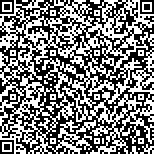下载中心
优秀审稿专家
优秀论文
相关链接
摘要

湖冰是对气候变化十分敏感的冰冻圈水文变量,起到调节区域气候和湖泊生态系统的作用,并作为一种自然资源服务于冰上生产生活。湖冰覆盖和湖冰厚度是研究湖冰过程的关键变量,目前大多数湖冰研究集中在湖冰覆盖领域,湖冰厚度领域由于缺乏实测资料和专门的遥感观测平台还存在诸多空白,大量缺资料地区湖冰厚度仍处于未知状态,亟待方法和数据上的突破与创新。本文综述了近20年国内外湖冰厚度遥感反演领域的进展,介绍了各类反演方法的原理机理及主要优缺点,其中被动微波遥感方法具有良好的时间分辨率但空间分辨率较粗,难以覆盖中小型湖泊;基于SAR影像的主动微波方法空间分辨率较高但物理机制复杂,可靠性有待进一步验证;基于测高雷达的主动微波方法观测时段较长,物理机制明确,易于拓展到无实测资料湖泊,但空间覆盖相对有限;热红外遥感方法时空分辨率较好,但容易受云和湖冰表面积雪的影响,反演精度和可靠性有待提升。在此基础上,本文分析湖冰厚度遥感反演领域面临的主要挑战和发展方向包括:(1)厘清湖冰表面积雪相关的物理过程;(2)实现大范围实测冰厚和遥感资料的集成;(3)实现多源遥感冰厚反演方法的交叉融合。
Lake ice is an important variable in cryospheric hydrology that is quite sensitive to climate change, serving as a regulator to regional climate as well as lake ecosystems and a natural resource to sustain human activities on the ice. Lake ice cover and Lake Ice Thickness (LIT) are two key variables in lake ice studies. However, most lake ice studies focus on lake ice cover as opposed to LIT, due mostly to the lack of in situ LIT observations and effective satellite platforms. Consequently, LIT states in ungauged basins remain largely unknown, and critical knowledge gaps need to be filled with breakthroughs in remote sensing observations and retrieval methods. This study reviews the progress in the remote sensing of LIT for the past two decades, focusing on methods based on active and passive microwave information as well as methods based on thermal infrared information. Currently, the best retrieval accuracy of LIT is 0.1—0.2 m for satellite platforms, unable to meet the accuracy requirement (1—2 cm) from the Global Climate Observing System (GCOS). Passive microwave sensors such as AMSR-E and AMSR2 with high temporal-resolution and coarse spatial resolution (~30 km) are efficient for monitoring LIT in large lakes. SAR images can be used to discriminate bedfast lake ice and floating ice, applicable to shallow lakes and lakes with bathymetry information. Waveforms of satellite altimeters containing signals backscattered from the lake ice surface and the lake ice bottom can be used to estimate the traveling time of radar pulse within the ice, which is suitable for ungauged basins because the method is physically based and does not need calibration. Backscattering coefficients from satellite altimeters can also reflect LIT evolution but needs further investigation to improve its robustness. Thermal infrared information such as MODIS land surface temperatures can be used to drive lake ice models to estimate the LIT, but its accuracy is subject to the complicated process of lake surface snow. We summarize the challenges for current LIT studies and indicate future directions for LIT studies. There are four critical issues: (1) The physical process of lake ice and lake surface snow needs to be better resolved to improve the performance of remote sensing and modeling of LIT; (2) In situ measurements of LIT need to be aggregated and standardized in a larger scale to provide sufficient calibration and validation data; (3) Multisource remote sensing information of LIT can be better combined with lake ice modeling through data fusion and data assimilation to derive global LIT datasets with a longer period, higher spatiotemporal resolution and better accuracy; (4) With the development of new generations of satellite platforms, such as the latest altimetry missions (e.g., ICESat-2, Jason-CS, and SWOT) and SAR platforms, advanced methods can be developed to better achieve the LIT monitoring target set by GCOS.

